A low-lying area between two higher mountain ridges is called a valley. Depending upon the nature of its formation, a valley is variously known as a vale, dell, glen, canyon, gorge, strath, cove, and coon, or simply as a hollow. Sometimes one type of valley is known differently in different regions. For example, a wooded valley, usually known as a dell, is known as a glen in Scotland. On account of their association with water and fertile lands, valleys have played a vital role in the development of human societies and their cultural and socio-economic development. The disputed Kashmir Valley is one of the most beautiful valleys in the world. Similarly, the Swat Valley of Pakistan is unparalleled in its scenic beauty and, once a great tourist attraction, has been greatly troubled by the Taliban in recent times. Most of the great, ancient civilizations, like the Indus and Egyptian civilizations, developed in or around the great valleys like the Indus and the Nile Valleys. With the increasing awareness about the environment, valleys too are getting more importance particularly in reference to preservation of biodiversity.
1. The Indus Valley

Originating from Mansorovar Lake, at the Tibetan Plateau, 93 percent of the Indus River flows through Pakistan, while 5 percent of it is in China and 2 percent is in India. It is about 2,000 miles long and falls in the Arabian Sea near Karachi. The ancient Indus civilization developed on the banks of the Indus River about 5,000 years ago. Major cities of the Indus Valley Civilization: like Harappa and Mohenjo-Daro date back to 3300 BC and were designated as UNESCO World Heritage sites in 1980. The excavation shows that cities were built with solid brick and stone with a proper sewerage system. They had developed very precise measuring units with the smallest terms comparable to millimeters. They had a language which, unlike the Egyptian hieroglyphs, has yet not been decoded. These settlements existed in the times of ancient Egypt, Mesopotamia, and Crete. The blind Indus River Dolphin (Platanista gangetica minor) is a sub-species of dolphin found exclusively in the Indus River. According to WWF, it is one of the most threatened species, and only 1,000 of them currently exist.
2. Valley of Flowers, India
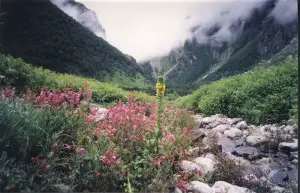
Located in Utrakhand State at the West Himalayan heights, the Valley of Flowers is a UNESCO World Heritage Site. The park opens in June and closes in October on account of its being covered in heavy snow during remainder of the months. During the open months, the valley is carpeted with more than 500 species of flowers including: orchids, primulas, daisies, anemones, poppies, and calendulas. The stunning beauty of the flowers justifies its name. It is a paradise of biodiversity and is rich, not only in flora, but also it is home to many endangered species like: blue sheep, brown bear, Asian black bear and snow leopards.
3. The Valley of the Kings
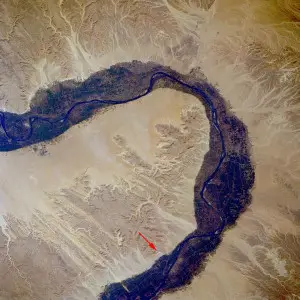
Located on the west bank of the River Nile, the Valley of the Kings lies opposite to Thebes currently known as Luxor. Tombs of the pharaohs were constructed in this valley from the 16th to the 11th century BC. There are 63 tombs of various sizes including some being a small pit while there are others comprised of more than 120 chambers, decorated with the scenes from Egyptian mythology. Currently, the valley is best known for the exploration of the tomb of the pharaoh Tutankhamun. It is a world-renowned archaeological site and was designated as a World Heritage Site in 1979.
4. The Panjshir Valley
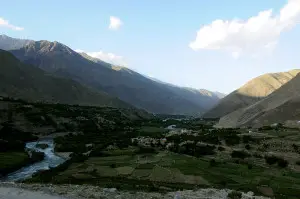
‘Panjshir’ is derived from ‘Panj’ meaning ‘five’ and ‘Shir’ meaning ‘lion,’ and literally means ‘the land of five lions,’ named after the five, brave brothers who sometime in the past protected the land and built a water reservoir. The valley is located in the Panjshir province near the Hindu Kush mountain range about 150 km north of Kabul, the capital of Afghanistan. It is home to about 140,000 residents. The valley was known for silver mining in the past and yields the best quality crystals. It is also known for mining emeralds and other precious stones. In connection with the American reconstruction efforts for Afghanistan, new roads and a radio station have been developed in Panjshir valley.
5. The Nile Valley
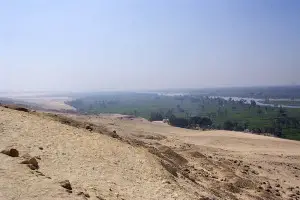
The 6,650 km long Nile River is generally considered the longest river, and it flows through ten countries including: Sudan, South Sudan, Burundi, Rawanda, Congo, Tanzania, Kenya, Ethiopia, Uganda, and Egypt. The ancient Egyptian civilization depended upon this river. Most of the population is concentrated alongside the river, and almost all of the historical archaeological sites are located along the river bank. The River Nile floods annually and leaves behind a lot of fertile clay after receding, and this results in bumper crops. It was customary during ancient times to offer human sacrifices to the river. After the construction of the Aswan Dam in 1970, there is no annual flooding of the river.
6. The Grand Canyon
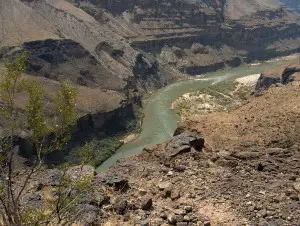
This canyon is a very deep river valley, and the Grand Canyon is created by the Colorado River in the State of Arizona, U.S. It is one of the Seven Natural Wonders of the World. The Grand Canyon is 277 miles long and 18 miles wide. At some places it is one mile deep. There have been different opinions about the formation of the canyon, but recently the geologists have arrived at the conclusion that the Colorado River started flowing into the canyon about 17 million years ago. The river continued cutting its course, layer by layer, and this continuous corrosion is the cause of its extraordinary depth.
7. The Shenandoah Valley

The Shenandoah Valley is named after the Shenandoah River which flows throughout the length of the valley. The valley is bordered to the east by the Blue Ridge Mountains and to the west by the Ridge and Valley Appalachians. To the north it is bounded by the Potomac River and by the James River to the south. The Shenandoah Valley comprises nine counties, which are: Frederick, Clark, Warren, Shenandoah, Page, Rockingham, Augusta, Rockbridge, Berkley, and Jefferson Counties in Virginia and West Virginia. The valley is a cultural region of Virginia. O’Neil in his play Mourning Becomes Electra, has kept Shenandoah as its theme song:
‘Oh, Shenadoah,
I long to see you
Away you rolling river
Oh, Shenadoah
Away, I’m bound away,
‘Cross the wide Missouri ‘
8. The Loire Valley (Vallee de la Loire)

The Loire Valley is located in the middle of the Loire River in central France. The valley spans 280 km, but the total area attached to it exceeds 800 sq. km. Due to its abundant vineyards and cherry orchards, the valley is known as the ‘Garden of France,’ and on account of its cultural heritage is known as ‘Cradle’ in the French Language. The valley includes towns of historic importance like: Angers, Chinon, Orleans, Tours, Ambiose, Blois, and Nantes. UNESCO enlisted the central Loire Valley as the World Heritage Site. The selection committee remarked that the valley is ‘an exceptional cultural landscape, of great beauty, comprised of historic cities and villages, great architectural monuments-the châteaux and’¦’
9. Sonoma; the Valley of the Moon (Valle de la Luna)
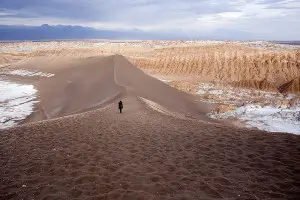
Sonoma, the Valley of the Moon, is located in Sonoma County between Mayacamas and the Sonoma mountains. Starting from San Pablo Bay in the south, it ends at the city of Santa Rosa in the north. The wine industry originated in the Sonoma Valley. Some of the oldest vineyards and wineries are found in this valley. Tourists from San Francisco are attracted towards Boyes Hot Springs and Aqua Caliente. Sonoma Mission, Boyes Hot Springs, wineries, historic sites, and the stunning beauty of its environment are the tourist attractions.
10. The Hunza Valley
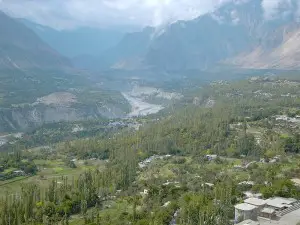
The Hunza Valley is located at an altitude of 7,999 ft. in Pakistan. It is surrounded by high Himalayan mountain peaks as high as 25,551 ft. The area includes the highest mountains in the world being Himalaya, Karakoram, Pamir, and Hindukush.The valley is famous for its beautiful environment longevity, hospitality, and high rate of literacy. More than 90 percent of the children of the valley go to high school, and many of them afterwards study in famous colleges and universities of Pakistan and abroad. People in the range of 120-140 years of age are seen in this valley, and the secret to their longevity is a natural diet and clean, spring water. Hunza water is iconic to mineral waters. The Romanian Nobel Laureate scientist Henry Coanda visited the valley at the age of 78 to study the properties of the Hunza Water.
Conclusion:
All the great, natural phenomena, like the seas, rivers, deserts and plains have specific attractions of their own. All of their distinguishing features seem to merge in the valleys, creating unique knife paintings on the canvass of the Earth. Many valleys have been listed by UNESCO World Heritage on account of their beauty or historic importance.










August 19, 2016 6:09 am
Some of the valleys projected here depict historical civilizations that have left archaeological treasures. We have yet many more valleys in all continents that are marvels of nature. How I wish that by some miracle these valleys could be made accessible to all peoples of the world.